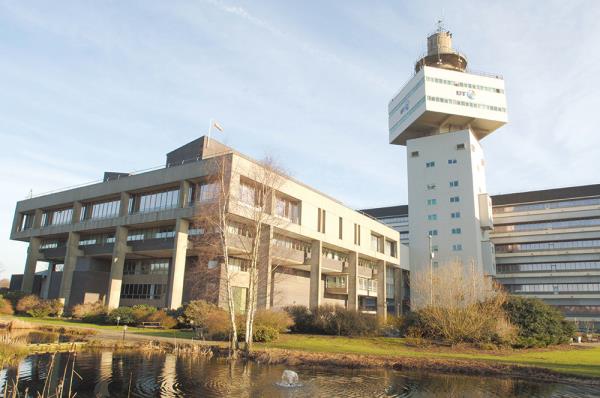18 July 2018

The network ran across a standard fibre connection from Cambridge to BT’s labs at Adastral Park in Ipswich (pictured) in what’s claimed to be less than a thousandth of a second.
BT says it has built the UK’s first practical quantum-secured high-speed fibre network. It runs across a standard fibre connection through multiple BT exchanges over a distance of 120km, and is said to be capable of transferring data at 500Gbps.
The network is part of a collaborative project led by the Quantum Communications Hub and was constructed by researchers from BT, the University of York, and the University of Cambridge over the past two years. It connects to the Cambridge Metropolitan QKD Network which was launched on 13 June.
The partners say the aim is to validate use cases for Quantum Key Distribution (QKD) technologies. This will include how the technology can be deployed to secure critical national infrastructure, as well as to protect the transfer of critical data, such as sensitive medical and financial information.
The quantum link itself is said to be virtually ‘un-hackable’ because it relies on the use of photons to transmit data encryption ‘keys’ across the fibre. BT says that should this communication be intercepted, the sender will be able to tell that the link has been tampered with and the stolen photons cannot then be used as part of the key, rendering the data stream incomprehensible to the hacker.
The partners are using equipment from ID Quantique to transmit the data encryption key using a stream of single light particles across the fibre network. In parallel, the encrypted data flows through the same fibre, powered by equipment from ADVA optical networks.
The fibre runs from Cambridge University Engineering Department’s Centre for Photonic Systems via quantum ‘repeater stations’ at Bury St. Edmunds and Newmarket before making its way to BT’s labs at Adastral Park in Ipswich in what’s claimed to be less than a thousandth of a second.
Professor Tim Spiller, director of the Quantum Communications Hub, says: “We know that QKD technology works. The importance of this network is the demonstration of its operation to potential end users and customers in a practical network environment, in order to stimulate market pull.”
The link is a joint initiative of BT and the Quantum Communications Hub which is led by the University of York and is one of four hubs in the National Quantum Technologies Programme. The hub is a collaboration between eight UK universities, private companies and public sector stakeholders that have common interests in exploiting quantum physics for the development of secure communications technologies and services.










